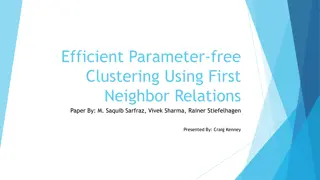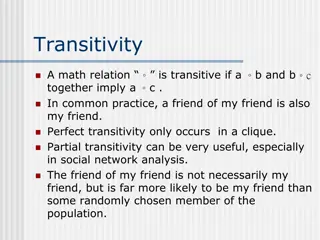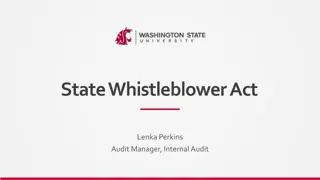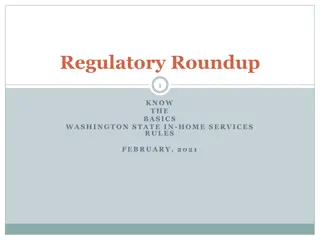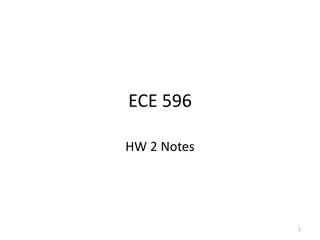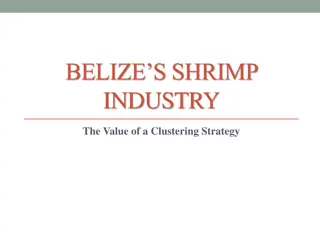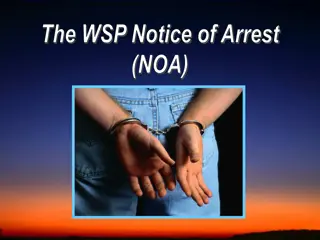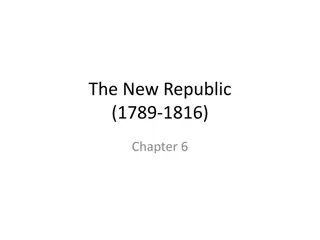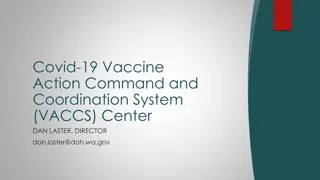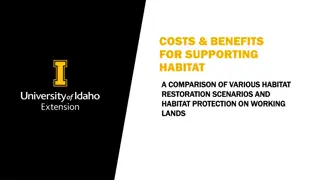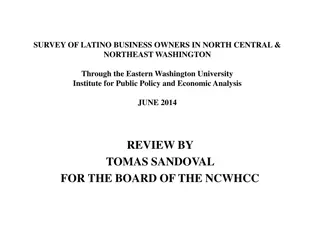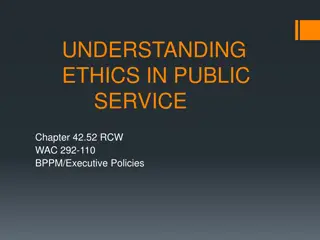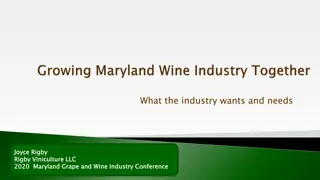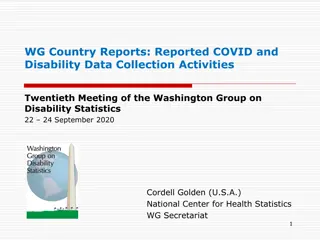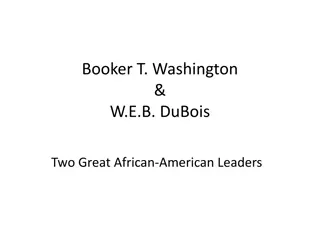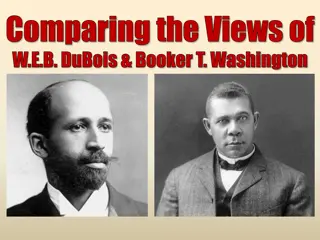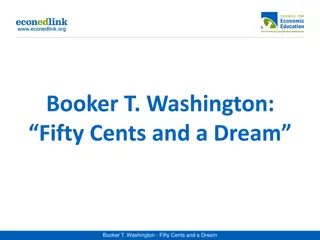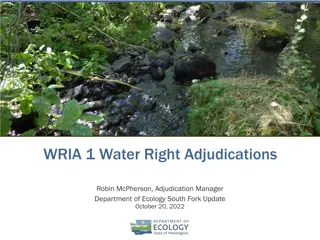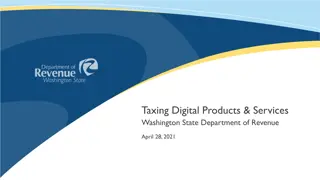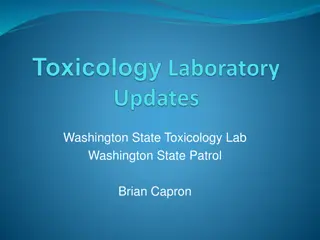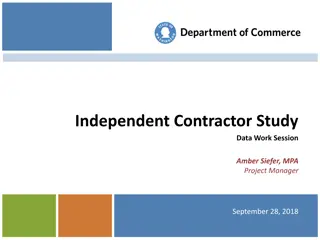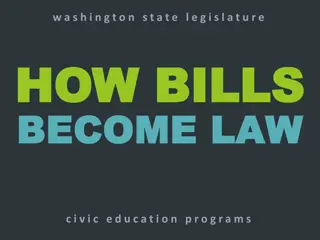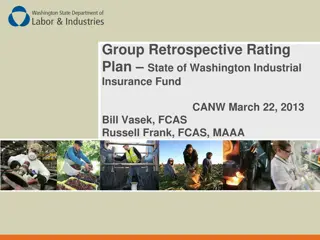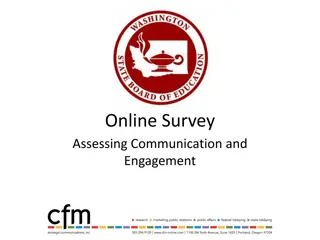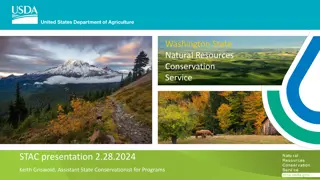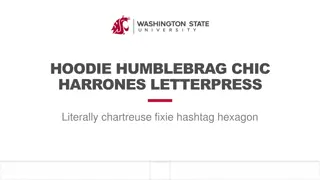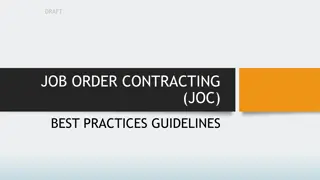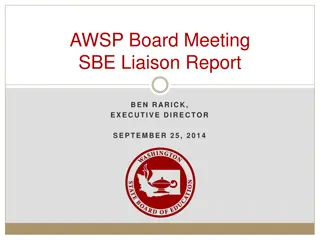Understanding Winery Clustering in Washington State: Factors and Implications
Explore the phenomenon of winery clustering in Washington State, examining factors such as natural advantages, collective reputation, and demand-side drivers. Discover why wineries in the region tend to locate close to each other and the impact on cost advantage and industry dynamics.
Download Presentation

Please find below an Image/Link to download the presentation.
The content on the website is provided AS IS for your information and personal use only. It may not be sold, licensed, or shared on other websites without obtaining consent from the author. Download presentation by click this link. If you encounter any issues during the download, it is possible that the publisher has removed the file from their server.
E N D
Presentation Transcript
Winery Clustering: Close to the Vine, or to Other Sources of Cost Advantage? Eric T. Stuen, Economics, University of Idaho Co-authored with Haifeng Felix Liao (UI Geography) Daniel Hickman (Economics), and Jon Miller (Economics, emeritus) Prepared for AAWE Ithaca Conference 6/12/18
Why are Washingtons wineries geographically clustered? Source: Zipf s Law, Agglomeration, and the Location of Washington Wineries , Working Paper by Miller and Hickman
Washingtons American Viticulture Areas (AVAs) Map source: www.winesnw.com
Testing Alfred Marshalls Theory of Industrial Concentration: Supply Side Factors Why might firms within the same industry cluster? Natural advantage: proximity to raw materials reduces production costs Ellison and Glaeser (1999) noted that wine industry is second-most agglomerated of US industries Marshall s other factors: Reduced transportation costs from proximity to customers Reduced employee search costs from proximity to skilled labor Knowledge spillovers: reduced product development costs Great are the advantages which people following the same skilled trade get from near neighborhood to one another. The mysteries of the trade become no mysteries; but are as it were in the air Marshall, Principles of Economics, 1920.
Collective Reputation: demand side driver of clustering Demand for individual wines is strongly influenced by brand and winery reputations Many brands associated with a region or terroir gain collective reputation as well. Red Mountain, a notable viticulture area in Washington State Supported by Costanigro et al (2010, 2012); also Miller and Stuen (2013)
WA Wine: an interesting test case The WA wine industry is young: due to cultural and political factors, almost no wine produced there pre-1967 Since 1967, has experienced exponential growth, and clustering in wine-making operations Our dataset covers the period when most of growth occurred
Washingtons geographically diverse wine clusters Three major winemaking clusters within Washington North Metro : King and Snohomish counties 25% of state s wineries, 30% of employment Tri-Cities Wine Belt : Yakima, Benton and Walla Walla counties 41% of state s wineries, 46% of employment Wenatchee-Chelan-Quincy : Chelan and Grant counties 8% of wineries, 7% of employment
Contributions to Economics Few studies have simultaneously examined all of Marshall s factors for why firms cluster (Ellison and Glaeser, 1997; Ellison, Glaeser and Kerr, 2010) Proximity to grapes AND knowledge spillovers likely important, but hasn t been previously shown Only one prior study has directly measured knowledge spillovers in the wine industry (Giuliani, 2007), but did not simultaneously examine other factors She did not find evidence of geographic spillovers after mapping firms social connections
Modeling Winery Clustering ???????? = ?(?????,?????????,?????????) Proxy for grape costs: index of proximity to vineyards Proxy for demand: index of proximity to household income Proxy for knowledge: lagged number of wineries; winery-years prior to 1994
Preliminary Empirical Analysis We examine clustering at zip-code level Empirical model: ??????????= ?0+?1????????+?2????????+?3?????????? 1+?4?????????? 1 ?????????? +??? Variables Wineries: number of wine-making establishments in zip-code i in year t Grapes: index of proximity to vineyards Yearsprior: number of winery-years in zip-code prior to 1994 Alternative dependent variable: total winery employment
Proximity to Vineyards Index ? ??????? ??? ????????= ?=1 Vines is # of wine grapevines in AVA j in year t d is distance between center of AVA j and zip- code i
Proximity to Income Index Data from Bureau of Economic Analysis ????? ??? ? ????????= ?=1 Inc is aggregate household income per county c
Dataset description Table 1: Descriptive Statistics Source Non-zero obs % Variable Mean Min Max County Business Patterns Survey, US Census Bureau Wineries 9.5 0.21 0 60 Winery employment (estimate) County Business Patterns Survey, US Census Bureau 9.5 2.63 0 936.5 Vineyard proximity index NASS vines/ava data; GIS 100 167.47 20.23 2906.98 Income proximity index BEA; GIS 100 12.06 2.55 248.78 Winery-years prior to 1994 Authors' investigations 2.8 0.58 0 68
First-pass regressions Table 2: OLS and Poisson regressions of number of wineries per zip code. (1) (2) Explanatory variables OLS Poisson (3) OLS Stronger statistical significance in Poisson Proximity to vines index 0.00223** (0.000878) 0.00187*** (0.000334) 0.000047* (0.000025) Proximity to income index Income index is nowhere significant -0.00105 (0.00262) -0.0102 (0.0287) -1.67e-05 (0.000155) Number of wineries, 1 year lag 1.031*** (0.0134) Yearsprior * lagged wineries 0.00112* (0.000608) 0.00384 (0.00401) Lagged wineries is (obviously) a strong predictor, but vines index explains about 6% Intercept -0.147 (0.0998) -1.939*** (0.501) Observations R-squared Robust standard errors in parentheses. Error terms clustered by zip-code. *** p<0.01, ** p<0.05, * p<0.1 12,558 0.062 12,558 11,960 0.973
Table 3: OLS and Poisson regressions of winery employment per zip code. (1) Explanatory variables OLS (2) (3) OLS (4) Poisson Poisson Converted to elasticity at mean, = 0.29 Proximity to vines index 0.0260** 0.00185*** 0.00263* (0.0103) (0.000386) 0.00179*** (0.000303) (0.00143) Proximity to income index 0.00954 (0.0364) 0.00304 (0.0118) -0.000644 (0.00256) 0.000733 (0.0124) Winery employment, 1 year lag 0.998*** (0.0521) 0.0125*** (0.00143) yearsprior accelerates growth rate of wineries, but dampens employment Yearsprior * lagged employment -0.000137 -7.12e-05*** (0.000848) -0.208 (0.171) (2.40e-05) -0.0221 (0.231) Intercept -1.838 (1.483) 0.431 (0.378) Observations R-squared Robust standard errors in parentheses. Error terms clustered by zip-code. *** p<0.01, ** p<0.05, * p<0.1 12,558 0.035 12,558 11,960 0.893 11,960
Some Observations from Initial Results AVA-based proximity index has some explanatory power (R-sq 0.06, 0.035 on wineries and employment) Zip Codes are probably too small a unit of analysis to capture the effects of knowledge spillovers In spillover lit., tacit knowledge is transferred more often between people within a drivable distance (75 100 mi)
Future directions: next steps Will construct an index of distance to early wineries (pre- 1994) Need better measures of winemaking knowledge Use wine quality data? (ratings, awards) Could location history of collegiate viticulture programs be a significant factor?
More next steps Trying to get more accurate winery employment data and wage data from WA Employment Security Department. Turnover data could be useful in measuring knowledge spillovers Endogeneity of vines? Any instrumental variables? Any other possibilities for control variables?


